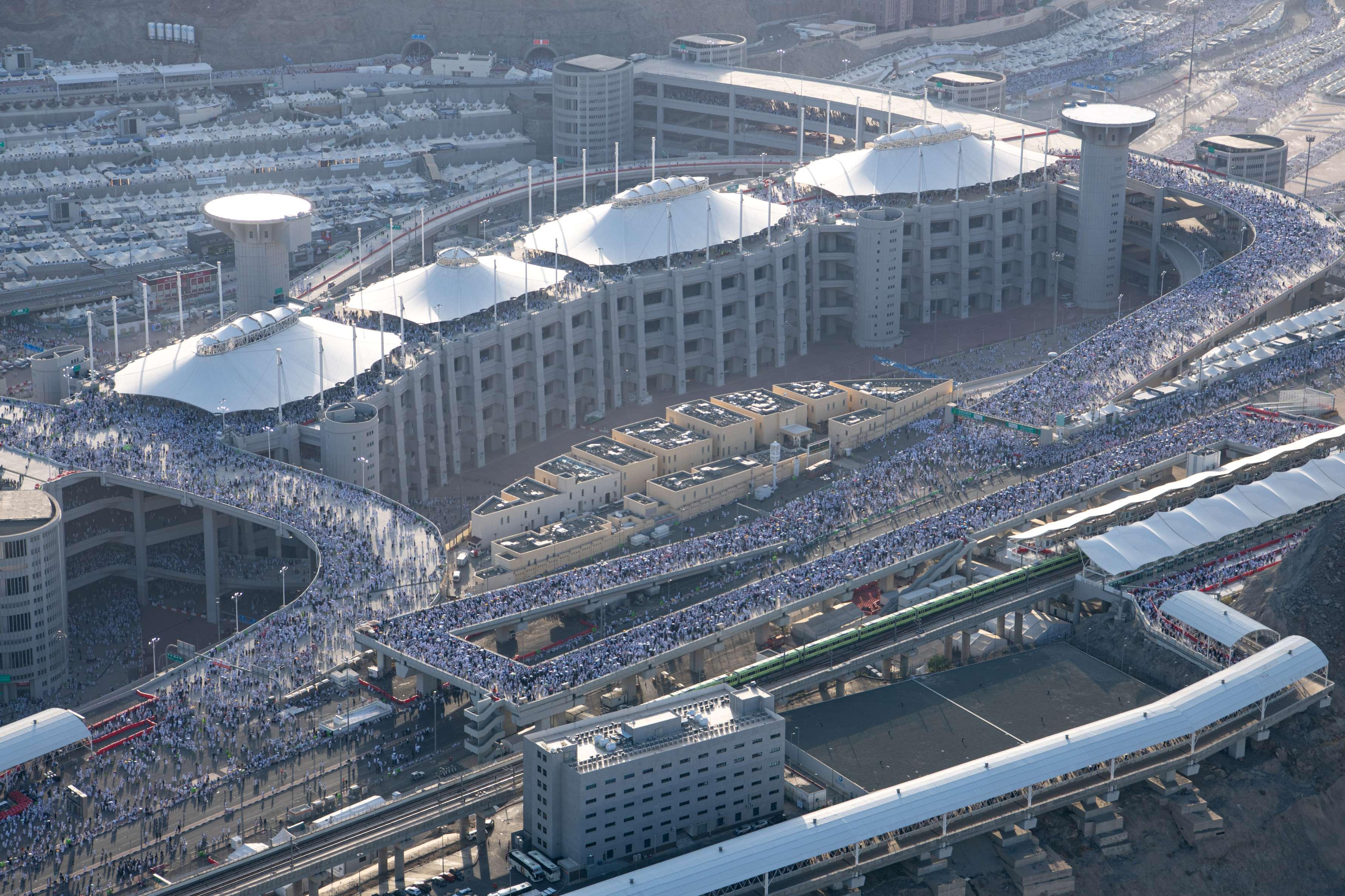
جِسْر الجَمَرَات
شهدت منطقة الجمرات عناية حكام الدول الإسلامية على مر العصور لتسهيل أداء نسك رجم الجمار على الحجاج فرُوي أنه في عصر الدولة العباسية أمر الخليفة العباسي المتوكل على الله عام 240هـ بتحديد موضع جمرة العقبة بعد أن عفا موضعها وبنى من ورائها جدارًا عليه أعلام بناها بالجص والحجارة، وأصلح الطريق التي سلكها رسول الله ﷺ من منى إلى شعب الأنصار.
وفي عصر الدولة السعودية حظيت منطقة الجمرات بالعديد من مراحل التطوير فقد وسعت الساحات المحيطة بالجمرات وبني عام 1395هـ جسر فوق الجمرات الثلاث لتوفير مستوى ثانٍ لمنطقة رمي الجمرات، وشهد هذا الجسر خلال السنوات التالية عددا من أعمال التحسين والتوسعة إلى أن بني الجسر الحديث الذي دشنت مرحلته الأولى عام 1427هـ واكتملت مراحل بنائه عام 1431هـ ، ويتكون الجسر من خمسة طوابق ارتفاع كل طابق 12م ويبلغ طول الجسر 950م وعرضه 80 م، وله 11 مدخلًا، و12 مخرجًا. وتبلغ الطاقة الاستيعابية للجسر 300 ألف حاج في الساعة، كما يشتمل الجسر على مرافق خدمات منہا مهبط للطائرات الروحية لحالات الطوارئ 3289 سلما كهربائيا، وأنظمة مراقبة، وأربعة أنفاق للسيارات والحافلات.



